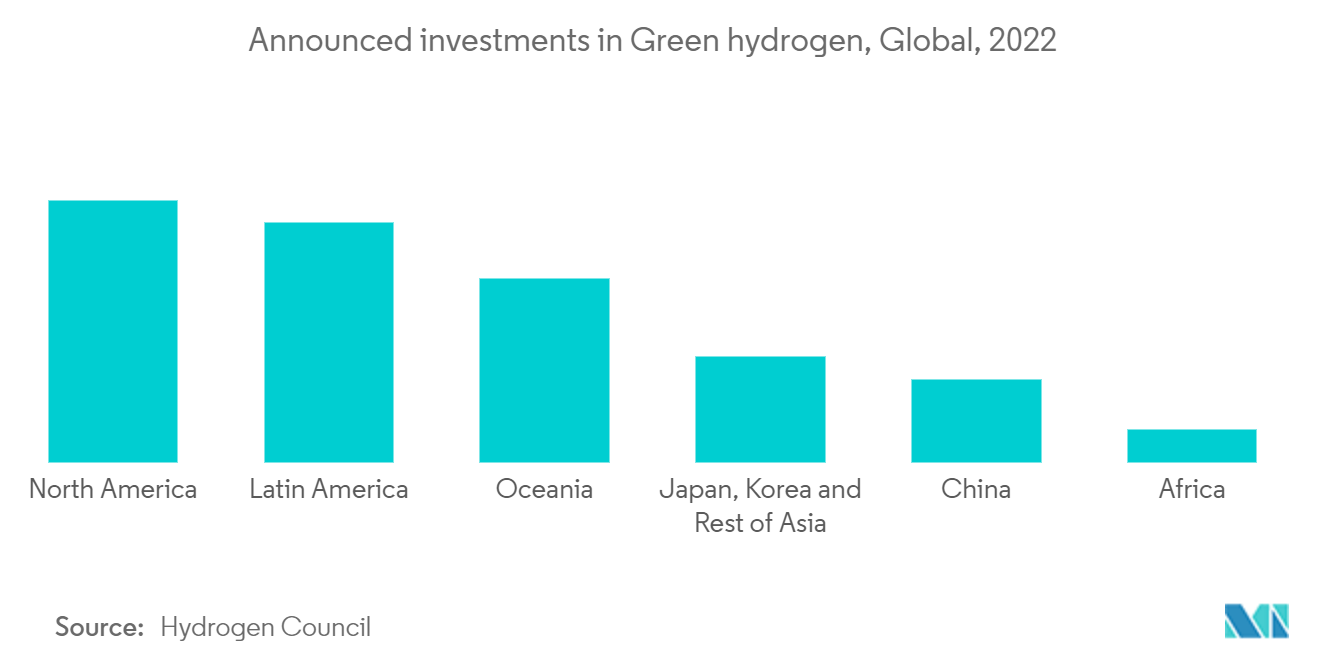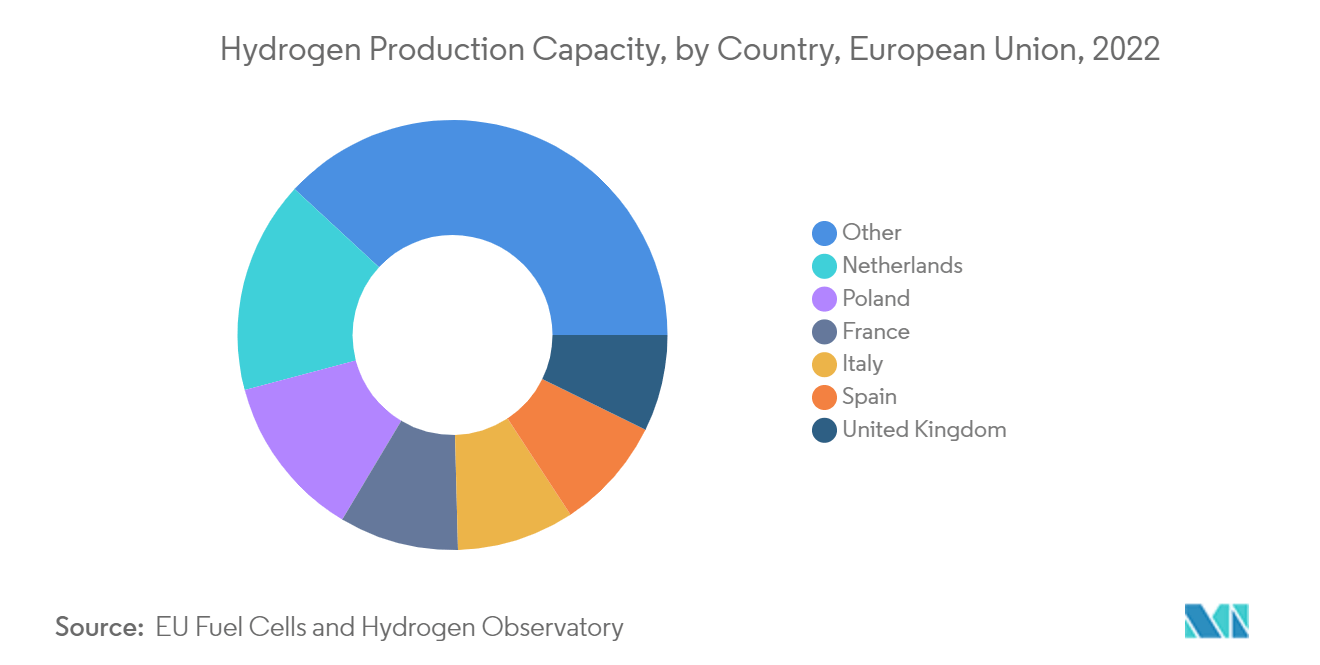Market Trends of Europe Hydrogen Generation Industry
This section covers the major market trends shaping the Europe Hydrogen Generation Market according to our research experts:
Demand for green hydrogen to drive the market
- Europe is expected to be the largest geographical market segment for green hydrogen during the forecast period.
- According to the Hydrogen Council, Europe is home to over 30% of proposed hydrogen investments, with a total investment of nearly USD 76 billion. About USD 32 billion is in the planning stages, and USD 6 billion involves committed investment. Europe has received h nearly 314 project proposals in total and 268 aiming for full or partial commissioning through 2030. Most of the green hydrogen projects are driven by strong governmental support at a regional level (EU) and at an individual country level.
- After the commencement of the Russian military intervention in Ukraine, as a part of the REPowerEU plan passed in May 2022, the EU aims to reduce overreliance on Russian gas imports by increasing renewable energy generation. One of the primary tenets of the plan is the 'hydrogen accelerator' strategy, which aims to produce 10 million tonnes and import 10 million tonnes of renewable hydrogen into the EU by 2030. As green hydrogen is renewable, the plan aims to support the EU's energy transition and help in the decarbonisation of many heavy industries.
- The phase-out of grey hydrogen is expected to be the fastest in Europe, with grey capacity representing only 25% of hydrogen production in 2030 due to the elimination of about 50% of grey capacity. Phase-outs of free allowances under the Emissions Trading System (ETS), available incentives for reconversions, and the introduction of a carbon border tax adjustment are expected to drive this change during the forecast period.
- In May 2022, the EU set up a target with European electrolyser manufacturers and set up an industry-wide target of increasing Europe's electrolyser manufacturing capacity from 1.75 GW/year to nearly ten times to 17.5 GW per year by 2025.
- Large investments in Green Hydrogen technology are expected to drive the market segment and overall market during the forecast period.

Germany to dominate the market
- Germany has been the forerunner in Europe in the realm of environmentally sustainable technologies, and the country is expected to continue its dominance in the Europe hydrogen generation market during the forecast period. According to the Fuel Cells and Hydrogen Observatory, as of March 2022, Germany is the largest European market for hydrogen, with 19% of total European hydrogen production capacity and 20% of total demand.
- Another primary reason is Germany's heavy reliance on Russian gas imports. With the Nord Stream 2 project's suspension and Germany's move to close down all nuclear power plants, the country has been grappling with high gas prices, leading to an energy crisis.
- In January 2022, Germany's Economy Ministry announced a target to increase the domestic production capacity of green hydrogen to rise by a factor of 150 from 70 MW today to 10 GW by 2030.
- As Germany tries to upgrade its renewable energy capacity, green hydrogen allows the country to collaborate with neighbouring countries in harnessing their renewable energy sources and provide an affordable alternative to Russian gas. As a part of its Hydrogen strategy, Germany aims to develop hydrogen pipelines to southern Europe, which has superior solar and wind energy potential. In March 2022, Germany concluded an agreement with Norway on a feasibility study for the construction of a hydrogen pipeline.
- Such significant targets and developments in the German hydrogen sector are expected to consolidate its position in the market, and the country is expected to be the largest geographical segment in the market during the forecast period.


